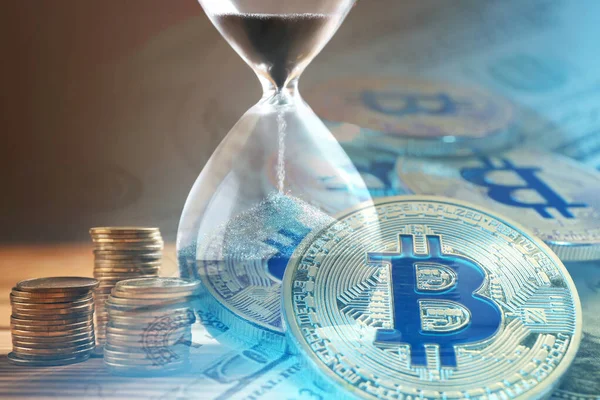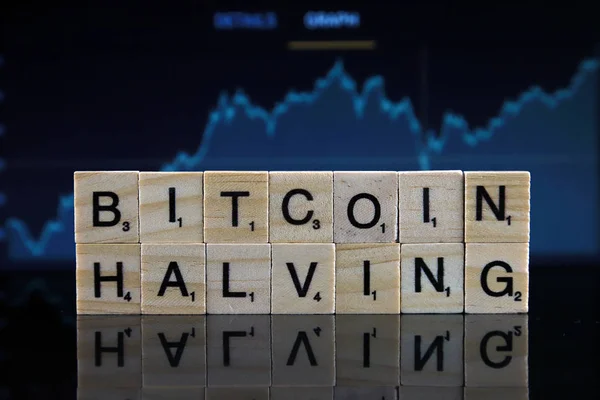In the world of digital currencies, the Bitcoin (BTC) halving event is a significant milestone. It is an occurrence that digital currency enthusiasts, traders, and investors keep a keen eye on. The BTC halving influences market trends, coin value, and, to a degree, the future of this revolutionary digital asset. This article seeks to navigate the complex ways in which BTC halving shapes the crypto market trends and what it could mean for investors.
Exploring the Intricacies of BTC Halving Dates

The BTC halving is a programmed event that cuts in half the rewards miners receive for adding new transactions to the Bitcoin blockchain. This halving takes place approximately every four years or roughly after every 210,000 blocks have been mined, which leads to a reduction in the new Bitcoins entering circulation. Thus, these halving dates mark a significant point of scarcity in Bitcoin’s economic model.
This algorithmically determined event is built into Bitcoin’s source code by its creator, Satoshi Nakamoto, to mimic the deflationary characteristics of precious metals like gold. Unlike fiat currency, which central banks can print more of at will, there will only ever be 21 million Bitcoins. It’s a deflationary measure that makes each Bitcoin more valuable as fewer of them are released into the market.
When the halving occurs, miners are awarded fewer Bitcoins for validating transactions. So, if they were previously getting 12.5 Bitcoins for each block they mined, after the halving event, they would receive only 6.25 Bitcoins. The reduction in mining rewards inadvertently affects the rate at which new coins enter the market.
Now, as finite resources, the Bitcoins’ value is impacted by supply and demand dynamics. As the supply of new Bitcoins coming into the market reduces, assuming the demand remains constant or increases, the Bitcoin price should theoretically increase. This explains why the anticipation around halving dates grows feverishly as the event gets closer in the markets.
However, it’s important to understand that the halving process is not without its unpredictability. While the timing of this event is known far in advance, the market implications are less clear. The halving concept introduces an interesting dynamic to the Bitcoin marketplace, which operates 24/7, unlike traditional stock markets.
How BTC Halving Dates Influence Market Trends

Bitcoin halving dates have an immense influence on market trends. The scarcity invoked by these events often drives significant bull runs in the Bitcoin market. Historically, halvings have been followed by impressive price rallies. Each of the three previous halving events – in November 2012, July 2016, and May 2020 – was followed by a considerable increase in Bitcoin’s price.
When the supply of new Bitcoins decreases due to halving events, the market responds to the reduced supply with increased demand, resulting in higher prices. This makes the halving event a pivotal moment in the Bitcoin market that could significantly impact the value of the cryptocurrency.
This influence on market trends tends to attract new traders and investors to the market. The prospect of price appreciation encourages increased demand, and if supply remains constant or decreases, as the principle of economics suggests, prices tend to rise.
Moreover, market trends shaped by BTC halving are also influenced by investors’ sentiments and speculations. Investors anticipate a price surge leading up to the halving event and often buy BTC to capitalize on potential gains, creating a speculative bubble.
Yet, while these events have the potential to spur significant price movements, they aren’t a guaranteed success. Market trends are also influenced by various other factors such as regulatory news, technological advancements, and broader economic factors.
Decoding the History and Impact of BTC Halvings

There have been three Bitcoin halving events since the inception of Bitcoin in 2009. The first halving event occurred in November 2012, bringing down the block reward from 50 BTC to 25 BTC. A spectacular bull run followed the event, where the price of Bitcoin climbed from $12 to over $1100 within a year.
The second halving event, which occurred in July 2016, reduced the mining reward from 25 BTC to 12.5 BTC. As before, it was followed by a bull run that saw the price of Bitcoin skyrocket to nearly $20,000 at the end of 2017, cementing cryptocurrencies in the general public’s awareness.
In the most recent halving event in May 2020, the block reward dropped from 12.5 BTC to 6.25 BTC. As of yet, the market has responded positively, with Bitcoin price reaching new all-time highs.
However, it is essential to note that these price movements weren’t immediate. Post-halving bull runs didn’t take place immediately after the halving; there was usually a delay of several months before significant price increases were observed.
The halving events have also indirectly impacted the general cryptocurrency ecosystem by triggering heightened media attention and public interest. Several altcoins (cryptocurrencies other than Bitcoin) gained traction as Bitcoin reached new heights after the 2016 and 2020 halving events.
BTC Halving Price Impact
| Halving Event | Pre-Halving Price | Post-Halving Price |
|---|---|---|
| Nov 2012 | $12 | $1100 |
| July 2016 | $650 | $20000 |
| May 2020 | $9000 | $60000 |
Source: CoinDesk
Unpacking the BTC Halving Date: What It Means for Investors

For investors, the BTC halving date can indicate an upcoming opportunity for investment. As discussed, past halving events have been followed by significant price surges, meaning these events could offer investment opportunities.
The months leading up to the halving are typically periods of high price volatility, presenting an opportunity for savvy investors to make profitable short term trades. However, the inherent unpredictability of cryptocurrencies means that such an approach carries considerable risk.
Traders and investors also view halving as a potential hedge against inflation. Given the current economic uncertainties with fiat currencies, more people adopt Bitcoin as a store of value. The prospect of Bitcoin becoming more scarce due to halving prompts people to buy and hold Bitcoin, aiming to profit from potential price increases.
Moreover, Bitcoin’s finite supply makes it an interesting proposition for long-term investments. The predictable decrease in supply due to upcoming halving could increase Bitcoin’s demand, leading to potential price rises in the future.
However, it is crucial for investors to understand that the crypto market is extremely volatile and can be influenced by many different factors. Therefore, any potential investment should be subjected to thorough research and assessment of risk tolerance.
The Relationship Between BTC Halving Dates and Market Volatility

By causing an immediate and significant reduction in the new supply of Bitcoins, BTC halving events can cause considerable price volatility. As history shows, in the run-up to the halving, prices generally increase as investors anticipate the event.
However, post-halving volatility can go both ways. While we have seen a considerable increase in the price of Bitcoins post-halving, there is no guarantee that this pattern will always hold.
Moreover, the halving itself can potentially introduce its own form of market instability. For example, if miners whose profits are already marginal decide to shut down their mining operations because the reward is no longer worthwhile, this could lead to a decrease in the mining difficulty level, potentially making Bitcoin more vulnerable to attacks.
Furthermore, increasing speculation around halving can lead to price pumping, followed by quick sell-offs, leading to significant market volatility. Hence, BTC halving – while an inherent part of Bitcoin’s deflationary nature – is a significant market event packed with potential volatility.
Anticipating the Next BTC Halving Date: A Forward Look

The estimated date for the next Bitcoin halving is in 2024. This event will reduce the block reward from 6.25 BTC to 3.125 BTC. Similar to previous halving events, crypto analysts predict an increase in the Bitcoin price following the halving.
As the event approaches, the crypto community’s speculation and anticipation may drive increased trading activity, market volatility, and potentially generate interest from new investors and traders.
In line with past occurrences, the digital asset may experience a significant bull cycle several months post-halving. However, investors must proceed with caution. While historical performance may provide some clues to potential outcomes, they should not be seen as a guarantee of future results.
The best course of action for investors is to stay updated with Bitcoin’s developments and market trends, keep an eye out for regulatory changes and technological advancements in the crypto space, review their investment strategies regularly, and always consider their risk tolerance before making investment decisions.
In conclusion, Bitcoin halvings are notable events that signify a change in the digital currency’s supply dynamics, potentially affecting its value in the markets. With halving events clearly influencing Bitcoin’s market behavior, they offer unique opportunities and challenges for investors and traders alike. While the anticipation of price increases creates a buoyant trading environment, investors must also be prepared for the possibility of increased market volatility. As always, staying informed and understanding the broader digital currency landscape is your best bet in navigating the murky waters of the post-halving Bitcoin market. Understanding the implications of the BTC halving will help you be better prepared to seize opportunities while managing the inherent risks of cryptocurrency investments.











BTC halving happens every four years. This makes Bitcoin more scarce and valuable.
It’s interesting to see how BTC halving reduces miner rewards. This influences Bitcoin’s value.
BTC halving means fewer coins are mined. This is important for understanding future trends.
Halving have influenced market trends before. This attracts traders and investors.
Past BTC halving events led to big price increases. Investors might benefit from this.
The article explains BTC halving well. It helps us understand market changes.
The article tells about three past BTC halving events. Each led to a price surge after some months.
BTC halving creates less new Bitcoin. This should increase prices if demand stays the same.